Latest Thread
You are using an out of date browser. It may not display this or other websites correctly.
You should upgrade or use an alternative browser.
You should upgrade or use an alternative browser.
T
Turko
Guest
Navy Unveils Next-Generation DDG(X) Warship Concept with Hypersonic Missiles, Lasers
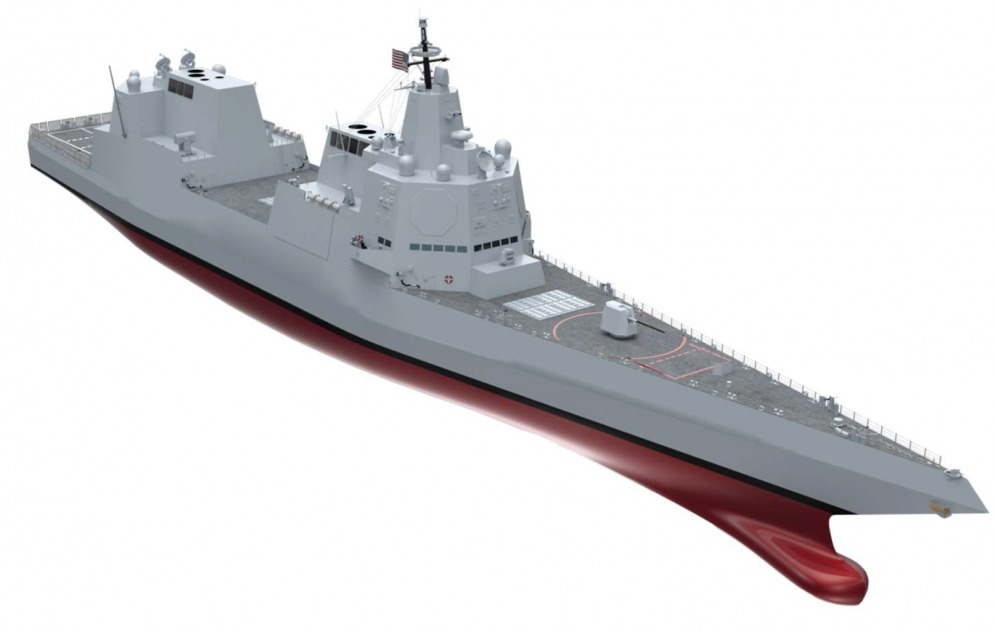
By: Sam LaGrone
January 12, 2022 4:51 PM • Updated: January 12, 2022 9:03 PM
ARLINGTON, Va. – The Navy wants its next warship to fire hypersonic missiles and lasers that would be ten times more powerful than the service’s existing laser weapons, according to the most detailed outlook to date of the DDG(X) next generation warship issued by the service.

Navy Unveils Next-Generation DDG(X) Warship Concept with Hypersonic Missiles, Lasers - USNI News
ARLINGTON, Va. – The Navy wants its next warship to fire hypersonic missiles and lasers that would be ten times more powerful than the service’s existing laser weapons, according to the most detailed outlook to date of the DDG(X) next generation warship issued by the service. The warship, the...
Seems ambitious, what are your thoughts? @AlphaMike @Anmdt et al.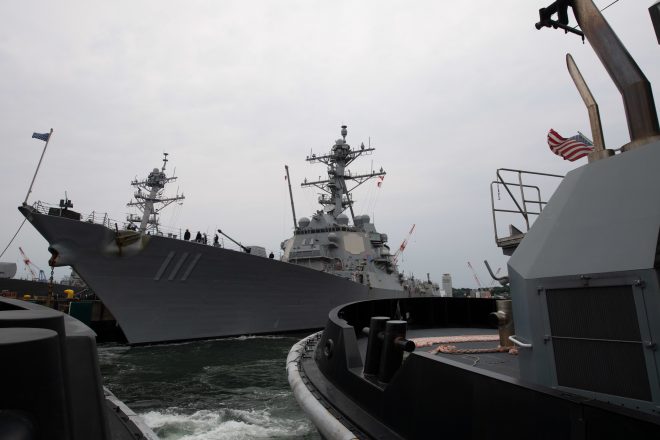
UPDATED: Navy’s Force Design 2045 Plans for 373 Ship Fleet, 150 Unmanned Vessels - USNI News
This post has been updated with comments from Chief of Naval Operations Adm. Mike Gilday The latest plan to design a future force calls for a fleet of 373 manned ships, buttressed by about 150 unmanned surface and underwater vehicles by 2045, according to Chief of Naval Operations Adm. Mike...
Navy’s Force Design 2045 Plans for 373 Ship Fleet, 150 Unmanned Vessels
Sam LaGroneJuly 26, 2022 1:23 PM
USS Abraham Lincoln (CVN-72) sails alongside amphibious assault carrier USS Tripoli (LHA-7) during a photo exercise for Valiant Shield 2022 on June 12, 2022. US Navy Photo
The latest plan to design a future force calls for a fleet of 373 manned ships, buttressed by about 150 unmanned surface and underwater vehicles by 2045, according to Chief of Naval Operations Adm. Mike Gilday’s update to his Navigation Plan for the Navy.
“In the 2040s and beyond, we envision this hybrid fleet to require more than 350 manned ships, about 150 large unmanned surface and subsurface platforms, and approximately 3,000 aircraft,” reads the NAVPLAN obtained by USNI News.
“Strategic competition with China is both a current and long-term challenge. Focusing our force design on 2045 will inform the most consequential decisions and investments the Navy needs to make in the critical decade ahead.”
Last week, USNI News reported the service had delivered a classified force structure assessment to Congress that factored in the combatant commander requirements and a more detailed threat assessment – particularly in the Western Pacific. The NAVPLAN factors in the latest National Defense Strategy idea of “integrated deterrence,” partnering the Defense Department with other government agencies to compete with China and keep a military advantage over Russia as well as the emerging Joint Warfare Concept linking the services together in a conflict.
The NAVPLAN defines the overarching threats as the declining value of military deterrence, aggressive actions from the Chinese and Russians in contrast to international law and the speed of technological change.
Under that thought process, the 2045 fleet promotes ships with the flexibility to host higher-power weapon systems and sensors that can be quickly upgraded as technology changes.
“We will build future platforms with modernization in mind—hardware upgradeable and software updateable at the speed of innovation,” reads the report.
“We must build adequate space, weight, and power into our large long-life capital investments to support evolving sensors and weapons systems.”
The notional 2045 Navy calls for:
12 Columbia-class ballistic missile nuclear submarines
12 Aircraft carriers
66 Submarines split between fast attack and large diameter payload boats
96 Large surface combatants like the Arleigh Burke class destroyer and the emerging DDG(X) next-generation destroyer
56 Constellation-class guided-missile frigates
31 Large amphibious ships
18 Light amphibious warships to support to Marine Littoral Regiments
82 Combat logistics ships and auxiliaries
150 large surface and subsurface unmanned vessels that will act as sensors and as auxiliary magazines to the manned fleet
USS Spruance (DDG-111) arrives at Commander, Fleet Activities Yokosuka (CFAY) for a scheduled port visit as part of the Abraham Lincoln Strike Group on May 21, 2022. US Navy Photo
In aviation, the plan calls for a mix of 1,300 5th generation carrier aircraft with a family of Next Generation Air Dominance fighters and unmanned aerial vehicles, 900 “anti-submarine and anti-surface warfare, to include helicopters and maritime patrol and reconnaissance aircraft” and 750 support aircraft.
The totals are a further tweak to the roughly 500-ship total Gilday said the service needed to meet its requirements during remarks at the WEST 2022 conference, co-hosted by AFCEA and the U.S. Naval Institute earlier this year. The round number is also largely in line with the Trump administration’s fleet plan then-Secretary of Defense Mark Esper issued late in 2020.
In line with a larger Defense Department drive, the Navy is crafting a concept of operations to conquer the vast distances in the Western Pacific with a network of sensors and shooters to find and attack targets. The Navy’s emerging Distributed Maritime Operations concept was refined last year during the Large Scale Exercise 2021. The idea for DMO is to have a fleet commander with direct operational control over several formations like a carrier strike groups and amphibious ready groups to mass their power together over thousands of miles.
To keep the pace and cost of new ships to the fleet, the report doubles down on the Fiscal Year 2023 budget goals of cutting existing ships in the fleet, including aging Ticonderoga -class cruisers and relatively young Littoral Combat Ships. Removing both classes of ships from the fleet have been contentious in Congress, with legislators form both parties seeking to block the early retirements.
“The Navy must set a sustainable trajectory now to ensure we remain the combat-credible maritime force our nation needs in the future,” reads the report.
“Retiring legacy platforms that cannot stay relevant in contested seas—and investing in the capabilities we need for the future—is essential for our national security.”
Seems ambitious, what are your thoughts? @AlphaMike @Anmdt et al.

UPDATED: Navy’s Force Design 2045 Plans for 373 Ship Fleet, 150 Unmanned Vessels - USNI News
This post has been updated with comments from Chief of Naval Operations Adm. Mike Gilday The latest plan to design a future force calls for a fleet of 373 manned ships, buttressed by about 150 unmanned surface and underwater vehicles by 2045, according to Chief of Naval Operations Adm. Mike...news.usni.org
Navy’s Force Design 2045 Plans for 373 Ship Fleet, 150 Unmanned Vessels
Sam LaGroneJuly 26, 2022 1:23 PM
USS Abraham Lincoln (CVN-72) sails alongside amphibious assault carrier USS Tripoli (LHA-7) during a photo exercise for Valiant Shield 2022 on June 12, 2022. US Navy Photo
The latest plan to design a future force calls for a fleet of 373 manned ships, buttressed by about 150 unmanned surface and underwater vehicles by 2045, according to Chief of Naval Operations Adm. Mike Gilday’s update to his Navigation Plan for the Navy.
“In the 2040s and beyond, we envision this hybrid fleet to require more than 350 manned ships, about 150 large unmanned surface and subsurface platforms, and approximately 3,000 aircraft,” reads the NAVPLAN obtained by USNI News.
“Strategic competition with China is both a current and long-term challenge. Focusing our force design on 2045 will inform the most consequential decisions and investments the Navy needs to make in the critical decade ahead.”
Last week, USNI News reported the service had delivered a classified force structure assessment to Congress that factored in the combatant commander requirements and a more detailed threat assessment – particularly in the Western Pacific. The NAVPLAN factors in the latest National Defense Strategy idea of “integrated deterrence,” partnering the Defense Department with other government agencies to compete with China and keep a military advantage over Russia as well as the emerging Joint Warfare Concept linking the services together in a conflict.
The NAVPLAN defines the overarching threats as the declining value of military deterrence, aggressive actions from the Chinese and Russians in contrast to international law and the speed of technological change.
Under that thought process, the 2045 fleet promotes ships with the flexibility to host higher-power weapon systems and sensors that can be quickly upgraded as technology changes.
“We will build future platforms with modernization in mind—hardware upgradeable and software updateable at the speed of innovation,” reads the report.
“We must build adequate space, weight, and power into our large long-life capital investments to support evolving sensors and weapons systems.”
The notional 2045 Navy calls for:
12 Columbia-class ballistic missile nuclear submarines
12 Aircraft carriers
66 Submarines split between fast attack and large diameter payload boats
96 Large surface combatants like the Arleigh Burke class destroyer and the emerging DDG(X) next-generation destroyer
56 Constellation-class guided-missile frigates
31 Large amphibious ships
18 Light amphibious warships to support to Marine Littoral Regiments
82 Combat logistics ships and auxiliaries
150 large surface and subsurface unmanned vessels that will act as sensors and as auxiliary magazines to the manned fleet
USS Spruance (DDG-111) arrives at Commander, Fleet Activities Yokosuka (CFAY) for a scheduled port visit as part of the Abraham Lincoln Strike Group on May 21, 2022. US Navy Photo
In aviation, the plan calls for a mix of 1,300 5th generation carrier aircraft with a family of Next Generation Air Dominance fighters and unmanned aerial vehicles, 900 “anti-submarine and anti-surface warfare, to include helicopters and maritime patrol and reconnaissance aircraft” and 750 support aircraft.
The totals are a further tweak to the roughly 500-ship total Gilday said the service needed to meet its requirements during remarks at the WEST 2022 conference, co-hosted by AFCEA and the U.S. Naval Institute earlier this year. The round number is also largely in line with the Trump administration’s fleet plan then-Secretary of Defense Mark Esper issued late in 2020.
In line with a larger Defense Department drive, the Navy is crafting a concept of operations to conquer the vast distances in the Western Pacific with a network of sensors and shooters to find and attack targets. The Navy’s emerging Distributed Maritime Operations concept was refined last year during the Large Scale Exercise 2021. The idea for DMO is to have a fleet commander with direct operational control over several formations like a carrier strike groups and amphibious ready groups to mass their power together over thousands of miles.
To keep the pace and cost of new ships to the fleet, the report doubles down on the Fiscal Year 2023 budget goals of cutting existing ships in the fleet, including aging Ticonderoga -class cruisers and relatively young Littoral Combat Ships. Removing both classes of ships from the fleet have been contentious in Congress, with legislators form both parties seeking to block the early retirements.
“The Navy must set a sustainable trajectory now to ensure we remain the combat-credible maritime force our nation needs in the future,” reads the report.
“Retiring legacy platforms that cannot stay relevant in contested seas—and investing in the capabilities we need for the future—is essential for our national security.”
Here's my thought. 2045 is 23 years way. As of this writing (27/07/2022) The USN comprise of :
- 11 CVN divided into 2 classes
- 9 LHA divided into 2 classes
- 22 CG in a single class
- 70 DDG in a single class
- 14 SSB in a single class
- 4 SSGN in a single class
- 51 SSN divided into 3 classes
CVN (forces goal: 12 | currently active :11, fitting out : 1, under construction: 2)Out of all. the supercarrier fleet seems poised to meet the goal of 2045. The US will meet its desired fleet of 12 in 2024 with the induction of the USS John. F. Kennedy (CVN 79) before once again dip into 11 active carriers a year later with the retirement of the Nimitz in FY2025 .
The 2 under construction the future USS Enterprise and Dorris Miller will be inducted into active service somewhere in 2028-2030, in which the USN will again reach the desired fleet of 12 hulls with the addition of two carriers and the retirement of one, the USS Dwight D Eisenhower.
So the US carrier fleet will rotate around 11-12 carriers until 2045. That is if everything goes fine and no freak accident like the Bonhome Richard.
Large surface combatants (DDG + CG). (Forces goal : 96 | currently active : 70 DDG +22 CG= 92, fitting out : 4, under construction : 10)
The USN will gradually retire the 22 old Ticonderoga not late into 2030, which will make the DDG-51 class the only active large surface combatants of the fleet. As of the time of this writing:
- 70 are active in the fleet
- 4 are fitting out
- 10 are under construction
The DDG-51s are built in two shipyard (HII and GDBIW) with a combined output of 1 1/2 ships a year. A single Burke took at least 4,5 years to built.
FY 2022 saw the induction of the Frank E Petersen Jr (DDG-121) with the anticipation that Lenah H Sutcliffe Higbee (DDG-123) will join the fleet later this year. That means 2 destroyers for FY2022.
FY2023 The only ship that will realistically be commissioned to the fleet is the Carl M Levin (DDG-120)
FY 2024 will likely see the commissioning of the John Basilone (DDG-122) and Jack H lucas (DDG-125)
FY 2025 will again dip to only one destroyer commissioned , likely the Harvey C Barnum (DDG-124)
with only around 1.5 ships a year, realistically by 2045 the USN will have at least another 15 DDG-51 for a total of 85 Arleigh Burke's. That is if the US decide to retain the oldest Flight I into the fleet way to 2045.
so that will be 85 DDG-51 + 3 DDG-1000 : 88 LSC
As for the rest, the US might have to accelerate the research, design and testing of the DDG(X) to meet the demands of 96 total large surface combatants
Small Surface combatants/ Frigates (Forces goal : 56 | currently active : 0 , fitting out : 0, under construction : 2)
The Constellation class will be build (currently) on one shipyard(Fincantierri Marinette), with the option for a second shipyard to ramp up production, the are calls for a three ship a year construction for the FFG-62, there's currently no more information I know about this other than the ramping up of production will happen in FY2025.
So If everything goes right and we assume that they could build a three ship a year prod rate , 56 is achievable. Currently only 2 are under construction and would likely only joined the fleet somewhere in 2025-2027.
Nuclear attack submarines (Forces goal : 66 | currently active : 51 , fitting out : 2, under construction : 2)The mainstay of modern US SSN fleet is the Virginia's, around 21 are currently in active service, with the latest addition, the Montana SSN 794 just commissioned about a month ago.
FY 2022 saw the induction of 2 Virginia class SSN 793 and 794.
FY 2023 will likely saw either 2 Virginia or one, the contender being the SSN 795 and 796
With 2 more under construction
#SSN 797
#SSN 798
#SSN 799-807 are under various construction and fabrication phase.
It took around 5-6 years for a single boat, the upcoming block V will likely took a longer time with the addition of the VPM module. The build rate is also ~1.5 boat per year (varying) so we're likely seeing another addition of 12-15 Virginias to the USN until 2045, for around 36 Virginia's.
36 Virginias, 3 Seawolfs and the rest are flight III Los Angeles class which is now getting prepped for decommissioning. I think 66 (only comprised of modern Seawolfs and Virginias) is way to ambitious, but who knows.
To be continued......Update + CorrectionLarge surface combatants (DDG + CG). (Forces goal : 96 | currently active : 70 DDG +22 CG= 92, fitting out : 4, under construction : 10)
The USN will gradually retire the 22 old Ticonderoga not late into 2030, which will make the DDG-51 class the only active large surface combatants of the fleet. As of the time of this writing:
- 70 are active in the fleet
- 4 are fitting out
- 10 are under construction
- 72 DDG are active (70 Burke's + 2 Zumwalt)
Under construction + Fitting out latest update. All image are as recent as July- August. Credit to @GDBIW, @WeareHII and @Cavasships
DDG-120 and DDG-122
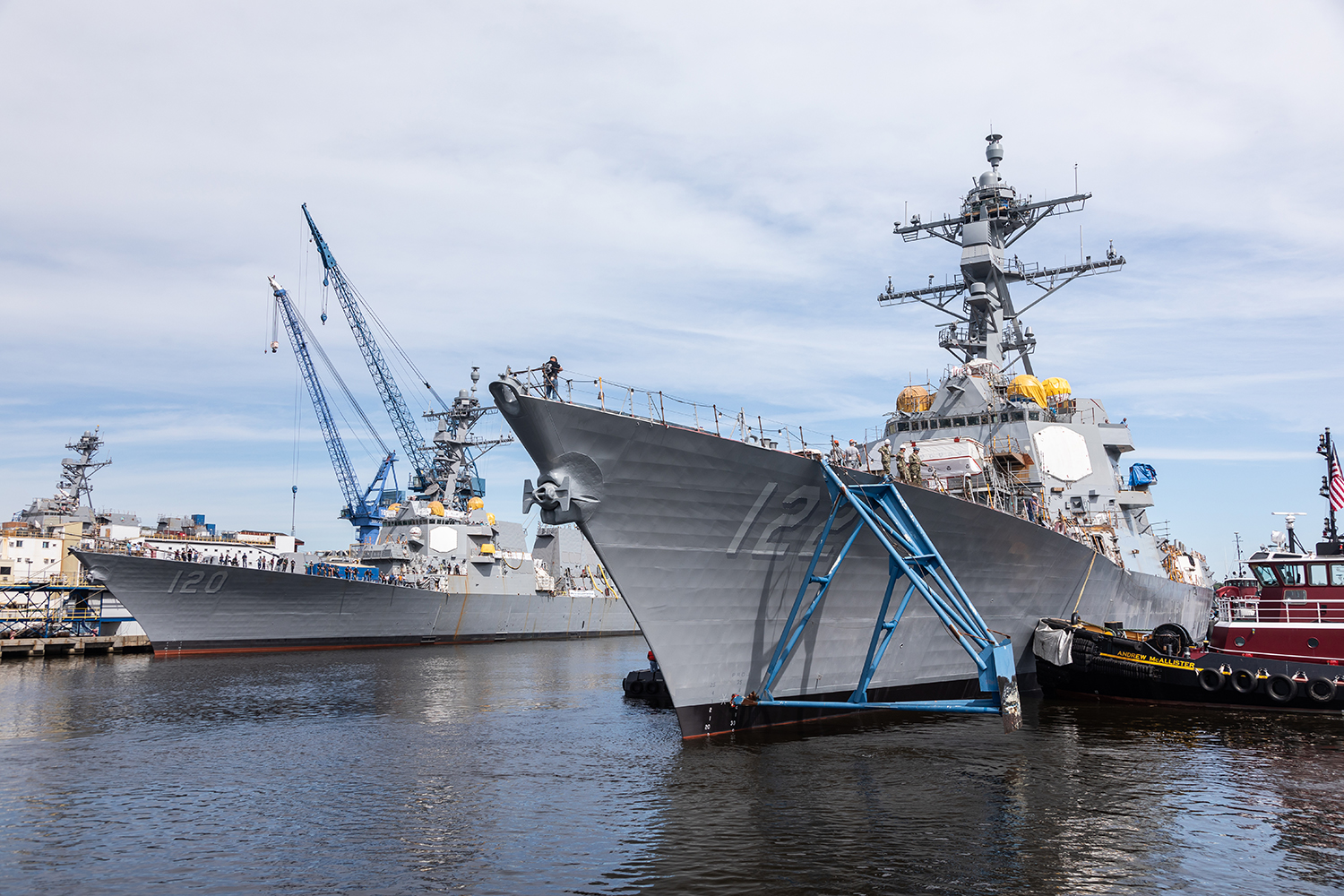
DDG-124 (near completion) and DDG-127 keel laying
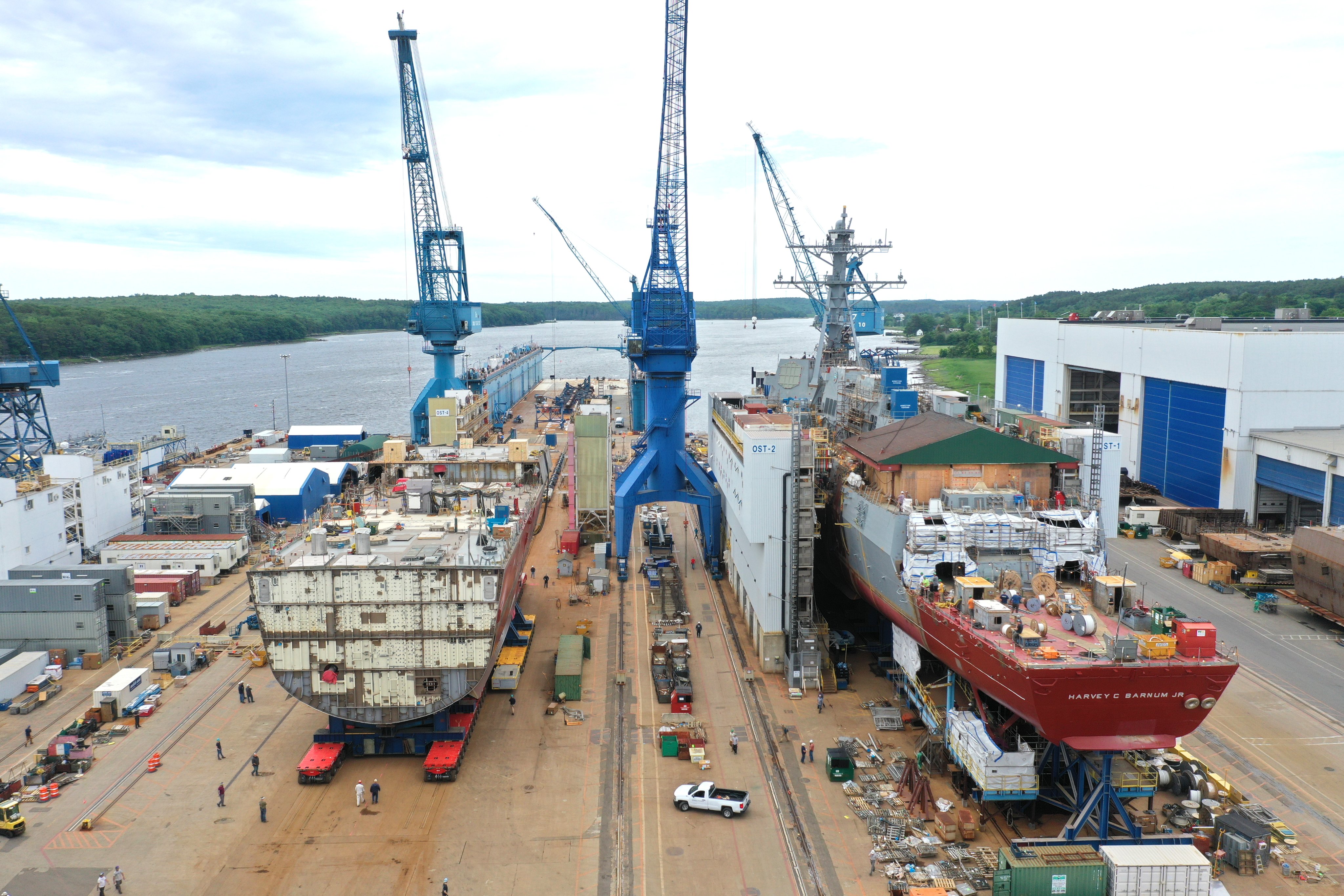
DDG-123

DDG-125

DDG-128

DDG-1002
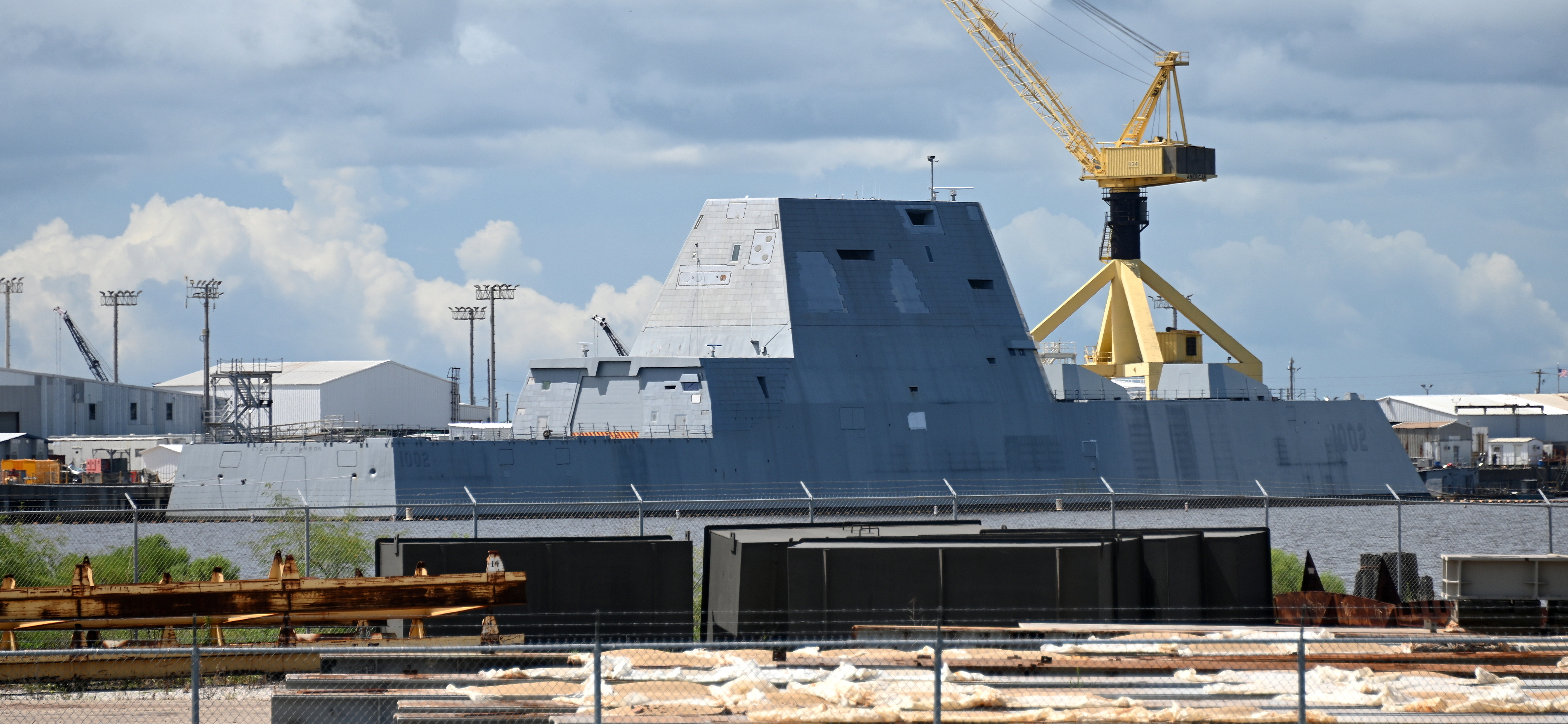
Some updatesNuclear attack submarines (Forces goal : 66 | currently active : 51 , fitting out : 2, under construction : 2)
The mainstay of modern US SSN fleet is the Virginia's, around 21 are currently in active service, with the latest addition, the Montana SSN 794 just commissioned about a month ago.FY 2022 saw the induction of 2 Virginia class SSN 793 and 794.FY 2023 will likely saw either 2 Virginia or one, the contender being the SSN 795 and 796With 2 more under construction#SSN 797#SSN 798#SSN 799-807 are under various construction and fabrication phase.It took around 5-6 years for a single boat, the upcoming block V will likely took a longer time with the addition of the VPM module. The build rate is also ~1.5 boat per year (varying) so we're likely seeing another addition of 12-15 Virginias to the USN until 2045, for around 36 Virginia's.36 Virginias, 3 Seawolfs and the rest are flight III Los Angeles class which is now getting prepped for decommissioning. I think 66 (only comprised of modern Seawolfs and Virginias) is way to ambitious, but who knows.To be continued......
SSN 798
SSN 800
https://twitter.com/WarshipCam/status/1555011339311095811?s=20
https://twitter.com/WarshipCam/status/1555011198541860865?s=20
Lockheed Martin Awarded $1.1 Billion Initial Contract To Provide Nation's First Sea-Based Hypersonic Strike Capability
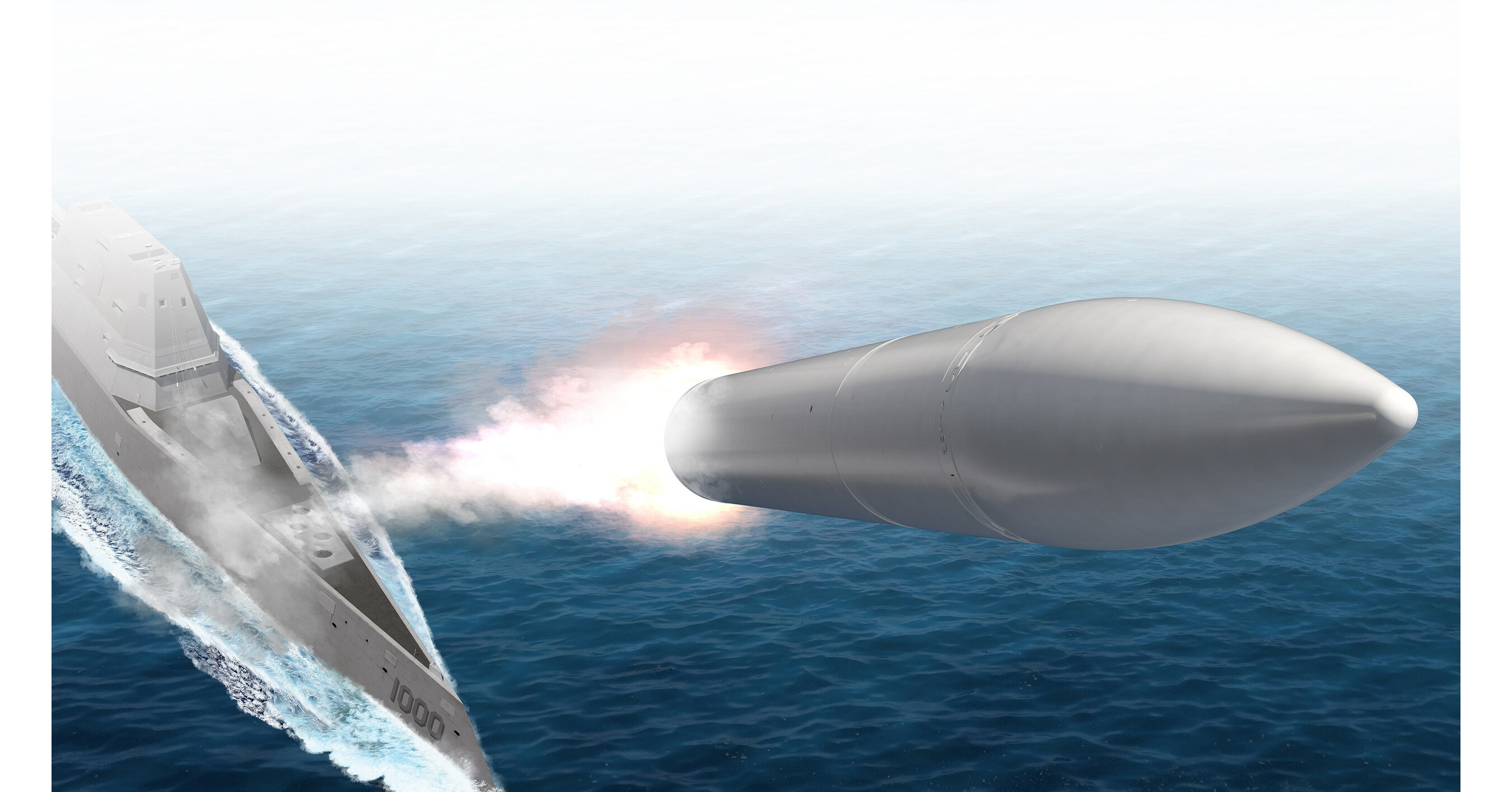
 news.lockheedmartin.com
news.lockheedmartin.com
CPS is a hypersonic boost glide missile development and test program that enables longer range, shorter time of flight and high survivability against enemy defenses.

Lockheed Martin Awarded $1.1 Billion Initial Contract to Provide Nation's First Sea-Based Hypersonic Strike Capability
Lockheed Martin (NYSE: LMT) is partnering with the U.S. Navy to integrate hypersonic strike capability onto surface ships. The U.S. Navy awarded Lockheed Martin a contract worth more than $2...
Conventional Prompt Strike (CPS)
CPS is a hypersonic boost glide missile development and test program that enables longer range, shorter time of flight and high survivability against enemy defenses.
@Nilgiri @Kartal1 @Sanchez check this out, SM-6 onboard Super Hornet.

Super Hornet Armed With SM-6 Missile Spotted Over California
F/A-18E/Fs armed with adapted SM-6 surface-to-air missiles that also possess major surface strike capabilities could be a boon for the Navy.
View attachment 68470
@Nilgiri @Kartal1 @Sanchez check this out, SM-6 onboard Super Hornet.

Super Hornet Armed With SM-6 Missile Spotted Over California
F/A-18E/Fs armed with adapted SM-6 surface-to-air missiles that also possess major surface strike capabilities could be a boon for the Navy.www.twz.com
Ward actually brought on indopacific region admiral to his podcast.
Admiral Sam Paparo, the Commander of U.S. Indo-Pacific Command, joins the channel for an in-depth discussion of his roles, responsibilities, and plan to deter and defeat China from a position of numerical inferiority.
Admiral Sam Paparo, the Commander of U.S. Indo-Pacific Command, joins the channel for an in-depth discussion of his roles, responsibilities, and plan to deter and defeat China from a position of numerical inferiority.
On March 15, U.S. Central Command began a series of precision strikes against the Houthis in Yemen. The U.S. strikes in Yemen could last for weeks. Officially, the goal of the strikes is to protect American interests, deter enemies, and restore freedom of navigation. The strikes are carried out by Tomahawk cruise missiles launched from the Ticonderoga-class cruisers USS Gettysburg (CG-64) and Arleigh Burke-class destroyers. F/A-18E Super Hornets from the aircraft carrier Harry S. Truman are also used. The F/A-18E Super Hornets use AGM-154 JSOW guided bombs and other weapons.
Low IQ Techie
Active member
Some new graphics render has come out by NG for F/A-XX.
It loos like a delta wing, with 2 rudders, only top flat intakes with middle separator.
Dark & difficult to see under wing & belly. There seems to be SWB & IWB.



It loos like a delta wing, with 2 rudders, only top flat intakes with middle separator.
Dark & difficult to see under wing & belly. There seems to be SWB & IWB.







